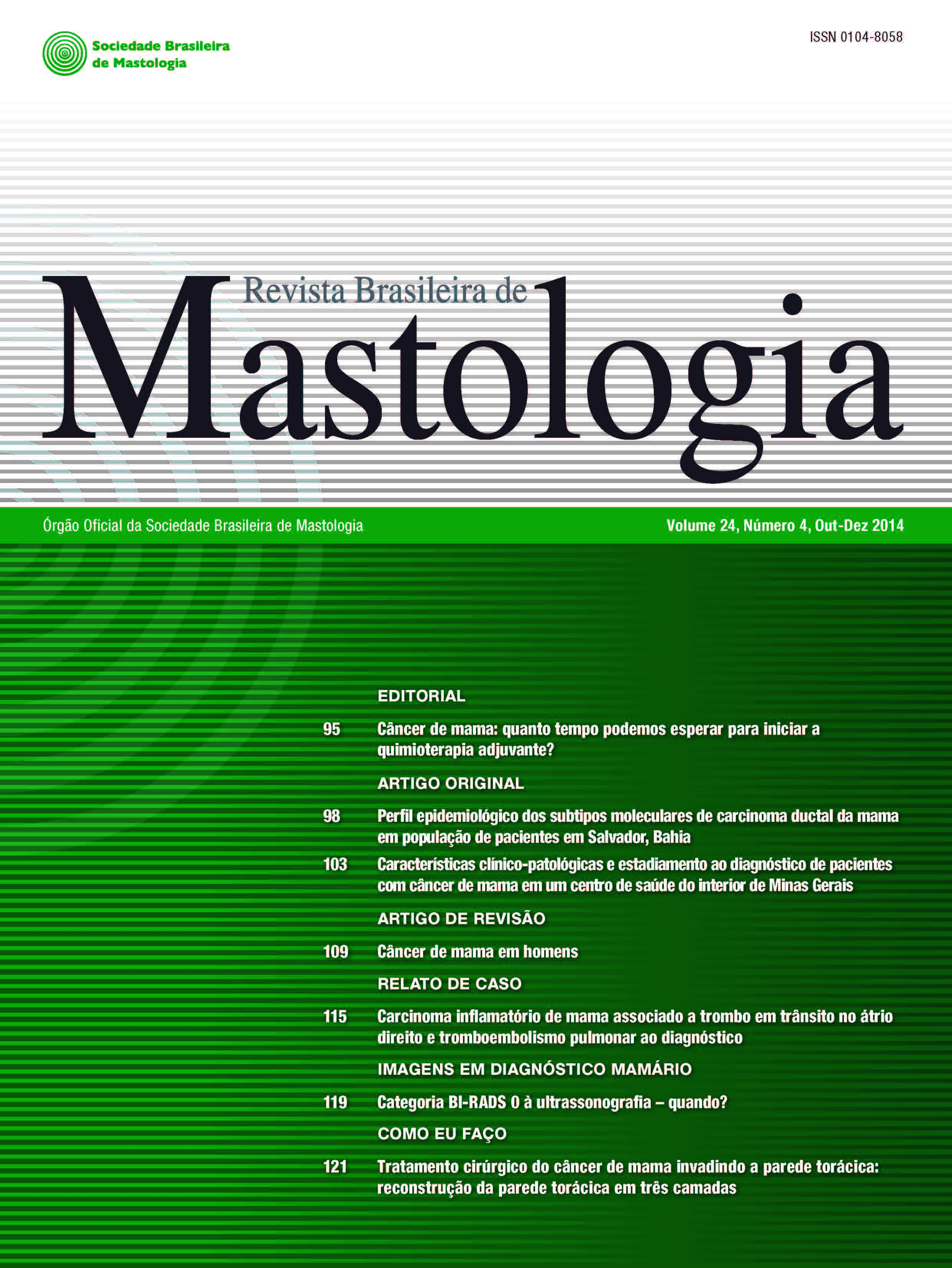Epidemiological profile of molecular subtypes of breast ductal carcinoma in patients population in Salvador, Bahia
Keywords:
Breast neoplasms, Immunohistochemistry, Receptors estrogen, Receptors progesterone, Receptor erbb-2, Ki-67 antigenAbstract
Objective: The aim of this study is to evaluate breast cancer molecular subtype distribution in a female population of two private centers in Salvador, Bahia, Brazil: Núcleo da Mama e o Núcleo de Oncologia da Bahia. Methodology: This is a cross-sectional study involving female patients with pathological diagnosis of invasive ductal carcinoma not otherwise specified (NOS). Patients with history of previous cancer except non-melanoma skin câncer; clinical data prior to systemic treatment unavailable and those without immunohistochemical report were excluded from the study. Breast cancer classification was based on four main molecular subtype patterns: luminal A, luminal B, HER2 + and triple negative. Frequencies and proportions were established for each of the molecular subtypes. Other clinical and laboratory data were also collected to determine baseline characteristics of the population studied. Results: We recruited 59 patients between December 2012 and May 2014 with an average age of 56.9 years. The most common molecular subtype of the sample was luminal B subtype, with 35 cases (59.3%), followed by luminal A (11 cases; 18.6%), triple negative (6 cases, 10.2%) and HER2+ (7 cases; 11.9%). Conclusions: Similar to other studies with Brazilian population samples, luminal B subtype is the most common in this sample of patients in Salvador, Bahia. The finding helps confirm the atypical pattern of the country in relation to that described in international literature, with important therapeutic and prognostic implications.
Downloads
Downloads
Published
How to Cite
Issue
Section
License

This work is licensed under a Creative Commons Attribution-NonCommercial-NoDerivatives 4.0 International License.









